#also in my defence the queue was down to 300 posts
Explore tagged Tumblr posts
Text
I zoned out for a second and now there are like 50 barbie posts in my queue
#i think im in a barbie deficit since we haven't done movie night for a few weeks because of the holiday season#we're not even at the good barbie movies anymore though#i wanna go back and watch diamond castle again#<- guy who for some reason isnt despite having it and time#ill find a way to make us rewatch that one >:)#panda as the one barbie time person who ik actually used tumblr uhhhh#look away :))#its okay i promise i wont make you watch barbie in a christmas carol until at least summer!!#<- lying#also in my defence the queue was down to 300 posts#it needs stuffing up#i did shuffle dw :)
4 notes
·
View notes
Text
Sunday, August 5th 2018 – Stonehenge, Amesbury, Wiltshire
For many, many years we’ve driven past Stonehenge on the A303, usually getting to somewhere to stay for Thruxton, but we’ve never stopped off. Even as a child on motoring holidays to Cornwall, we’d never stopped. So as we were less than an hour away in our B&B at Great Bedwyn, we figured Sunday morning might be a good chance to give the place a try. We reckoned it would be busy, but maybe not as busy perhaps as it might be after lunch. We booked tickets in advance, and turned up at the scheduled time.
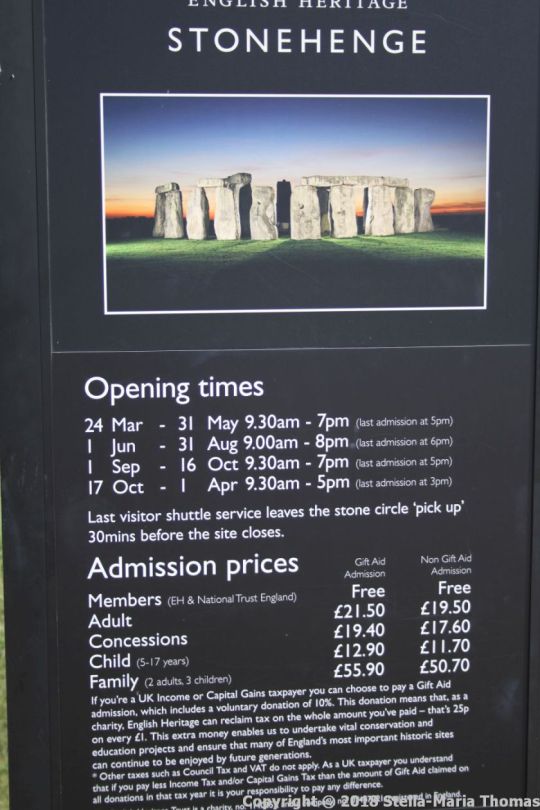
Getting in was complicated by the need to queue to collect our pre-booked tickets. The tickets on the day queue was almost empty and going a lot faster, but I wouldn’t count on that always being the case. The ticket office is around a mile and a quarter from the ticket office, and as it was a sticky, hot day we didn’t fancy the walk that much. The shuttle bus queue was fairly short and the buses seemed to be fairly frequent. They were, but what we hadn’t bargained for was that they weren’t stopping for those of us in the ordinary queue, but were picking up the boatloads of cruise passengers who are bussed into the site en masse in the morning and who apparently take precedence over the likes of you and me. I wasn’t terribly impressed by the fact that in the time it took us to get onto the third bus that actually stopped on our side, around 10 bus loads of cruise passengers had been picked up and taken to the stones. We waited 25 minutes, and I could have walked it in that time. I don’t care if they are on a tight schedule because they have to do Bath and Oxford as well in the same day… I really don’t. We had places we were scheduled to be as well.
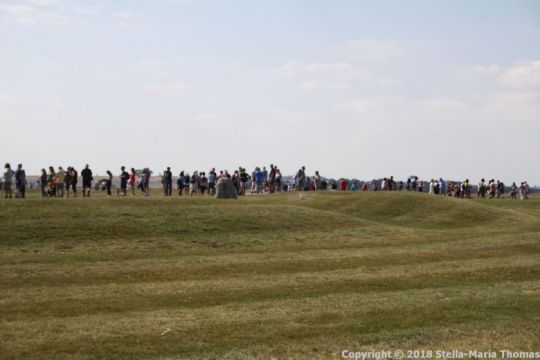
Up at the stop at the other end, the view of the stones more than makes up for the wait time. I wasn’t sure what to expect because I knew you weren’t allowed to get right up among the stones, and they have therefore been fenced off, but actually the “fence” wasn’t at all intrusive, and provided you didn’t stop on the corner right near the entrance, you could get a clear look at the whole complex from behind the low barrier, from where the sheer size is obvious. Also, the small “lumps” (I’m sure there’s a technical term for them) that presumably hold the lintels in place.

It’s good to see the site put into context, and there are a number of information plaques around the area that can provide extra knowledge for those that want it. Of course the site itself has been the source of many a theory in the past, before archaeology became a thing, and for that matter since. My personal favourite is probably the tale told by Geoffrey of Monmouth in his “Historia Regum Britanniae” (History of the Kings of Britain) written in 1136, which claimed that the stones were put up by Merlin. Fantastic claims aside, it seems many things about the monument will never be known.
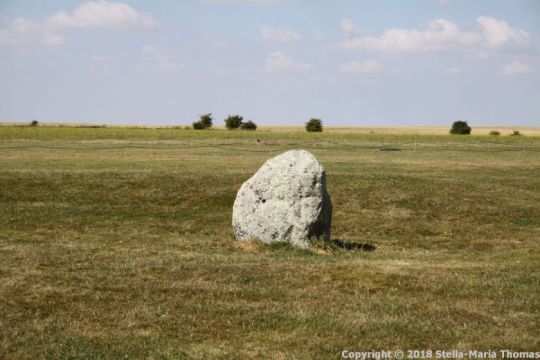
However, some things are known, and according to the information provided, we know that the place was started with a henge monument around 5,000 years ago, and that the stone circle is late Neolithic and dates from around 2500 years later. The site is presented as a landscape rather than just the stone circle, with all sorts of structures dotting the surrounding landscape, including the oldest known items, four or five pits from the Mesolithic period (8500 to 7000 BC), which seems to have held posts for something. What exactly, no one knows. For that matter, why exactly they ended up where they are no one knows. Lynne posited the theory that they’d simply got fed up of dragging the stones, and had erected the circle at the place where they’d run out of energy!

There is a suggestion on the English Heritage website that perhaps, given the south of England was heavily wooded, but it seems Salisbury Plain wasn’t, perhaps that was why it was chosen, and that it was its relatively open nature that made it the obvious site for what seems to be a complex of monuments including a bunch of burial mounds that line the top of the next ridge along, and that form the current World Heritage site along with Avebury. We didn’t go to Avebury because we’ve both been before, and frankly it creeps me right out for reasons I can’t pin down.
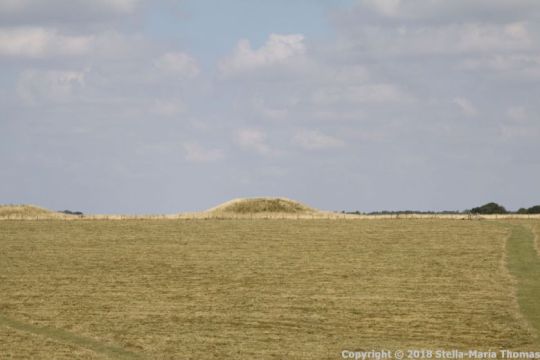
The Unesco site has this to say about the two areas: “Stonehenge is one of the most impressive prehistoric megalithic monuments in the world on account of the sheer size of its megaliths, the sophistication of its concentric plan and architectural design, the shaping of the stones – uniquely using both Wiltshire Sarsen sandstone and Pembroke Bluestone – and the precision with which it was built.
At Avebury, the massive Henge, containing the largest prehistoric stone circle in the world, and Silbury Hill, the largest prehistoric mound in Europe, demonstrate the outstanding engineering skills which were used to create masterpieces of earthen and megalithic architecture.”
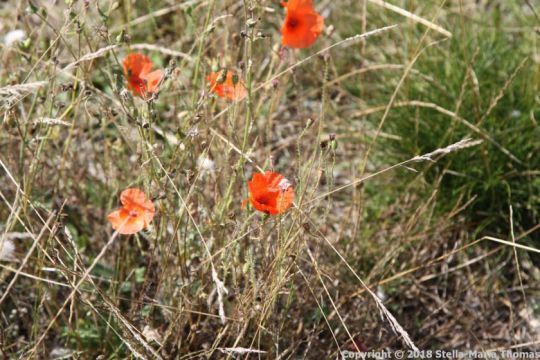
To return to the history of the actually stone circle, apparently the earliest known major event was the construction of a circular ditch with an inner and outer bank, in about 3000 BC. There may have been some wooden structures inside the ditch, but there definitely were a number of pits, 56 in fact, referred to as the Aubrey Holes. Again, no one knows for sure what the pits were for, and they may have held more posts, or they could have been for stones.

There’s no doubt about the burials and cremations though. There are around 65 cremations, with possibly 150 people buried here. It’s definitely the largest late Neolithic cemetery in the Britain. And it’s the resulting archaeological finds that are so fascinating. For example, there’s a very fine mace head made of banded gneiss that appears to be of Breton origin, axes from as far apart in England as Cumbria and Cornwall, and a piece of Niedermendig lava from northern Germany. One of the burials has also proven to be that of a man from what is now Switzerland, the isotope analysis pinpointing his origins. None of that seems to bother the corvids that have made it their territory.
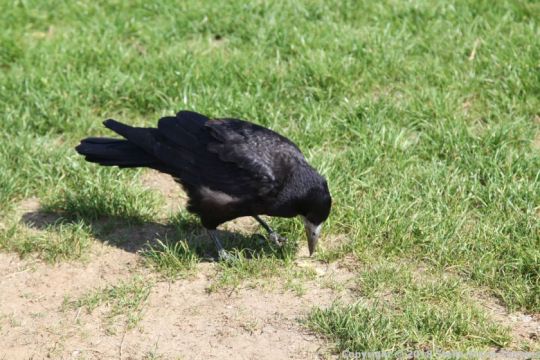
Some of the animal bones have been found to come from Scotland so it was clearly an international site of considerable importance in its day, and presumably also well known to all at a time with no news generating mechanisms as we know them. Much of this information is to be gained from the small museum that you can visit back at the visitor centre and shop, the museum having an exhibition about the foods raised, cooked and eaten in the era of the stone circle’s main use.
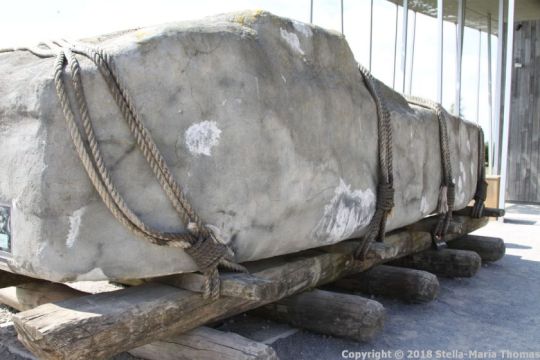
Anyway, apparently in 2,500 BC the stones were finally placed in the middle of the monument, with an inner horseshoe and an outer circle of sarsen stones, which are larger than the smaller bluestones which were set up between the sarsen shapes in a double arc. Some 300 years or so later the central bluestones were rearranged to form a circle and an inner oval, later altered to a horseshoe, and an earthwork avenue was built connecting Stonehenge with the Avon river.

A hillfort, which came to be known as Vespasian’s Camp despite being far too early to be anything to do with the Romans, was built in 700 BC to the east of Stonehenge overlooking the Avon. There is a Romam connection though, as many Roman objects have been found, and more recent excavations suggest it remained an important ritual site for the Romano-British population.
It then seems to have been ignored by history, the area being used for sheep farming, creeping into the written record from the 14th century onwards. It then became a centre of activity when, in 1897, the Ministry of Defence bought much of Salisbury Plain for army training exercises, setting up barracks, firing ranges, field hospitals, an airfield or two, and light railways were established. There is even a memorial to some of the early pioneers of aviation on the site, the Airman’s Cross.
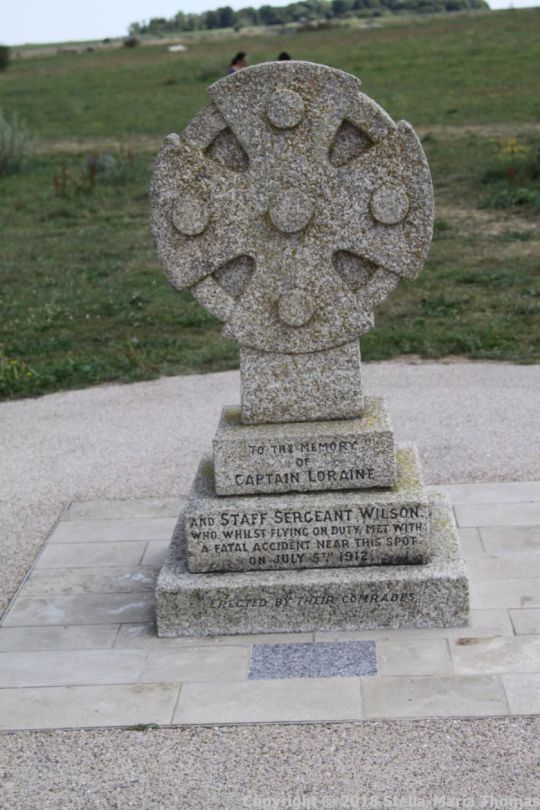
Visitor numbers started to rise when the railway to Salisbury opened, and with the addition of roads that crossed Sailsbury Plain even more people could come to see the stones. However, when an outer sarsen upright and lintel fell in 1900, the owner, Sir Edmund Antrobus, organised the re-erection of the leaning tallest trilithon in 1901, the beginning of a period of conservation and restoration projects that lasted until 1964. In 1918 the site was given to the nation by Cecil Chubb, who bought Stonehenge from the Antrobus family in 1915. It is now the responsibility of English Heritage, while the land around the site is in the hands of the National trust.
With the heat increasing, as a final fling for the morning, having looked at everything we could get near, we took a look at the replica Neolithic huts out the back of the visitor centre. One of them was being lived in today, with a swallow’s nest in the centre of the hut’s roof, and a little agitated head sticking out and chirruping at anyone that got too close. It was very well disguised so I’m not sure how many people actually saw them. I was pleased that I did.
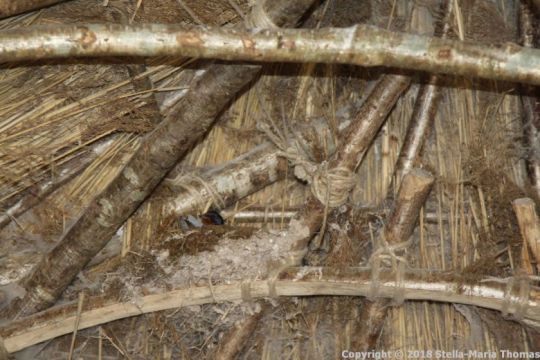
We slipped into the shop, bought a postcard and a fridge magnet, and left without spending any money on books. I did leave with a copy of the guidebook though…
Travel 2018 – Stonehenge, Amesbury Sunday, August 5th 2018 - Stonehenge, Amesbury, Wiltshire For many, many years we've driven past Stonehenge…
1 note
·
View note